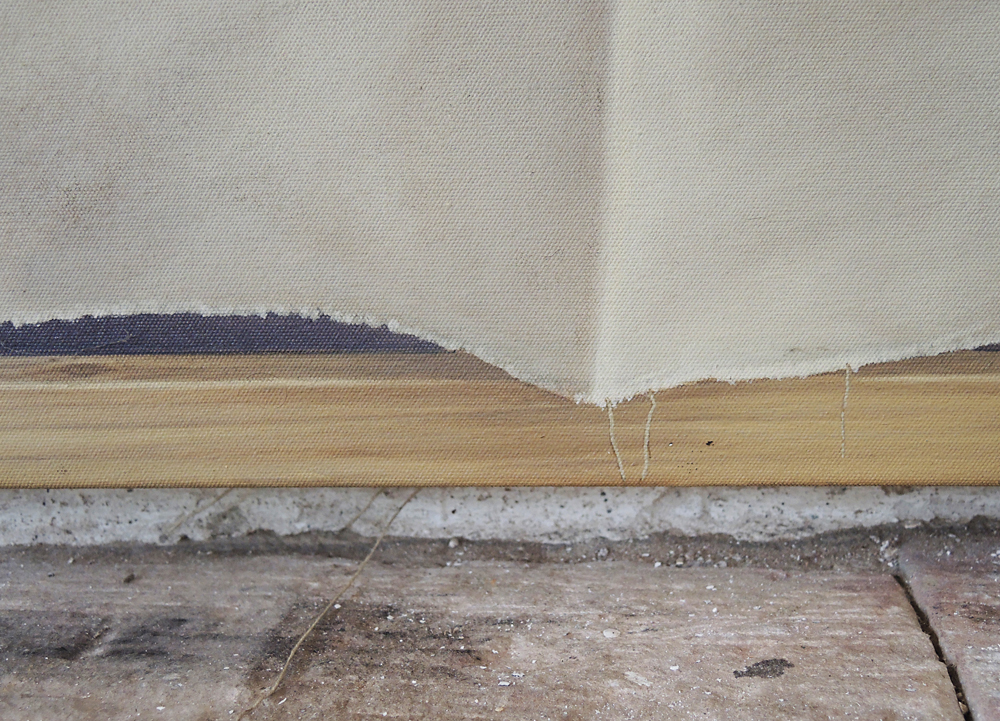shadows behind
– Ahmad Rafi works on two different levels. One is on the painted canvas itself and the other is the objects projected onto the material from behind.
Installation view, Atelier Konrad Franz , Hausen 2018
If one turns a canvas around one would see the canvas, as it is painted here by Rafi on the front of his painting. One can see silhouettes in two further canvases, from 2004, a landscape format and an upright format. Rafi plays with the view to his window here. In the window there are shelves with all kinds of objects on them. Canvas has been stretched over the frame and by looking towards the window one can see the objects’ silhouettes on the material. Again, playing with reversing our view.
A projection that goes through the canvas. Usually light falls onto the front of a canvas, but here in this painting it also is behind the canvas. Front and reverse allow a view through. In the upright format from 2004 the canvas seems to have been sewn together and one sees the shadow like silhouette of a man who has raised his arm to take a photograph, similar to Alfred Stieglitz. This completes a circle, connects to earlier canvases. Whereas the body was covered up before, it is now seen as a shadow. It is still a game with the immaterial, in a deeply material representation. Ahmad Rafi unifies the media of photography – which really should represent reality – and painting, and shows us that actually both are just an illusion.
Shadow behind the canvas, 2004
Oil on canvas, 97 x 62 cm
The canvas “ In the Painting Space“ seems to have become a curtain totally, and it is threaded onto a rope that is attached to the upper piece of wood on the canvas’ frame. The idea of a painting as a window is invoked, this represents the window to eternity.
In the Painting Space, 2003, Oil on canvas, 240 x 140 cm
In the Painting Space, 2003 -2004, Oil on canvas, 60 x 95 cm
The fact that the canvas transforms into a sort of sack in the following paintings – Rafi speaks of a provisions sack – only goes to show the canvas’ enormous ability for transformation. Ahmad Rafi stretches the sacks as if they were the slaughtered ox halves by Rembrandt. The sacks contain an unknown content. Probably painting itself, in a metaphorical sense.
stock-sack I, 2003 Oil on canvas, 95 x 85 cm
stock-sack II, 2003 Oil on canvas, 55 x 85 cm
In the upright format from 2004 the canvas seems to have been sewn together and one sees the shadow like silhouette of a man who has raised his arm to take a photograph, similar to Alfred Stieglitz. This completes a circle, connects to earlier canvases. Whereas the body was covered up before, it is now seen as a shadow. It is still a game with the immaterial, in a deeply material representation. Rafi unifies the media of photography – which really should represent reality – and painting, and shows us that actually both are just an illusion.
Shadow on the canvas, 2004, oil on canvas
In Studio, 2012, oil on canvas, 135 x 105 cm
Window in Venice, 2012, oil on canvas, 110 x 71 cm
Window in Venice II, 2012, oil on canvas, 80 x 71 cm










